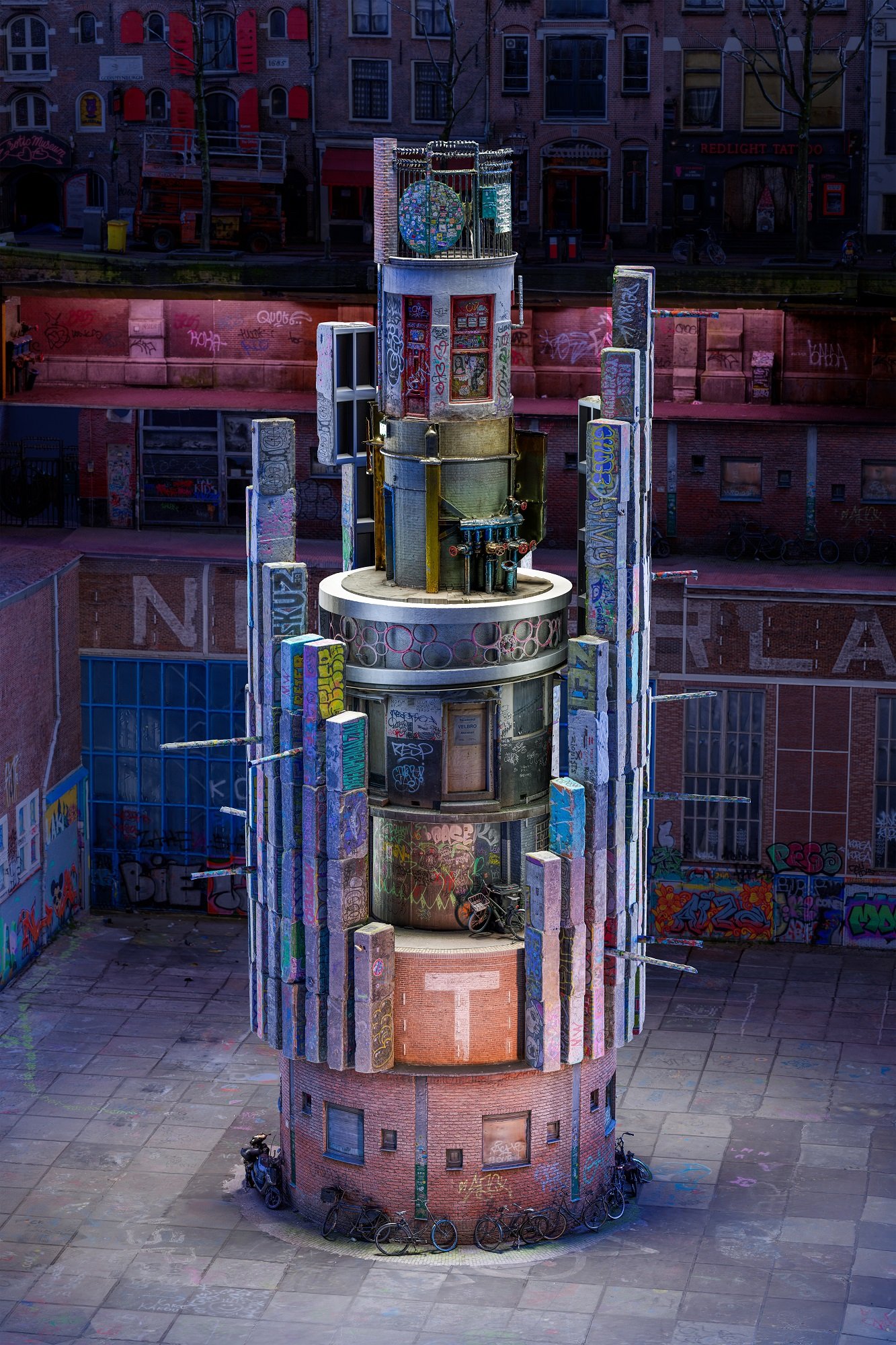URBAN ARTIFACTS
“The urban context is often understood as a palimpsest—layered with architectural, visual, and linguistic elements shaped by the practices and interactions of its inhabitants. A central challenge lies in treating this layered environment as an object of inquiry, given the multiplicity of perspectives and subjectivities embedded in its formation and interpretation. Urban elements exist at the intersection of material structures and the cultural or symbolic meanings attributed to them, and the relationships between these elements are mediated, and often disrupted, by the ways people interact with and use the city.
oddviz’s artistic practice demonstrates an approach that prioritizes the materiality of urban phenomena with a conscious intention to treat them as immersed in signifiers. Their work does not attempt to decode these signifiers but engages directly with the physical marks, traces, and inscriptions that shape urban spaces, treating these interventions as the material elements themselves. In other words, their artistic practice stems from a straightforward yet ambitious goal: faithfully documenting urban elements in public spaces in their three-dimensional, photorealistic detail.
Since 2016, oddviz has been producing urban inventories that leverage photography’s capacity for carrying data. Through photogrammetry, the collective converts urban surfaces into digital models, capturing the city’s layered and palimpsestic nature as data. For oddviz, the presence of marks on urban objects becomes a central point of interest. In the objects they work with, any form of mark—whether inscriptions, graffiti, posters, paint, or structural deterioration—elevates these objects from being mere components of the city to unique artifacts, each with a story to tell. This added layer of meaning motivates their documentation of these objects as part of their artistic practice. However, because these objects are removed from their original context and often presented in new, seemingly arbitrary environments, the history they convey is rooted solely in their material reality, which oddviz captures with photorealistic precision.
Photography serves as oddviz’s starting point for extending the visual experience of urban environments into digital spaces. Through photogrammetry, this perspective multiplies, merging hundreds of “eyes” into unified three-dimensional models. This multiplicity allows oddviz to isolate urban elements, offering vantage points that would otherwise remain unseen in the dense complexity of the city. While oddviz’s goal is neither exhaustive cataloging nor the elimination of subjectivity in representing their objects of inquiry, their ambition to document urban features in photorealistic, three-dimensional detail results in a corpus that is appropriated to create compositions generating new narratives.
In their Inventory series, for instance, these compositions evoke patterns or relief-like structures, suggesting aerial views or cartographic associations—maps or streets constructed from digital models of urban elements. Works like Lisbon I and San Lorenzo exemplify this process, while Berlin I and Boston I, featured in this exhibition, push the approach further. These pieces generate spatial configurations that verge on dreamlike, “hallucinated” versions of their respective cities, opening new possibilities for interpreting urban narratives.
With Urban Artifacts, oddviz deepens their exploration by juxtaposing compositional narratives from their inventories with urban artifacts, shifting from cataloging to creation. This transformation repositions the artifact as a site of artistic reflection. As technical and material infrastructures evolve, oddviz’s practice mirrors the shifting visual culture shaped by data-driven technologies, fueled by the countless images and data the city incessantly generates and manipulates. To those unfamiliar with oddviz’s artistic practice, their urban artifacts might initially appear to be AI-generated, given their meticulously layered compositions and photorealistic precision. However, their work emerges from a deliberate engagement with urban materiality rather than solely algorithmic outputs. While not a product of generative AI, oddviz’s practice operates within a visual landscape profoundly influenced by AI’s pervasive role in reshaping how we create, consume, and conceptualize images. In fact, oddviz’s urban artifacts seem to echo the infrastructure of AI-driven tools, orbiting the urban fabric much like smartphones, drones, and satellites that endlessly map and record the city, rather than being direct products of such technologies. These artifacts, rooted in their palimpsestic materiality yet suspended in digital space, become satellites themselves—hovering over the urban fabric, which recedes into the background behind these novel creations. As both subject and agent, the city incessantly harvests, appropriates, and manipulates data, embedding these processes within broader transformations of perception and space.
Yet, this evolution comes with a paradox. While Urban Artifacts constructs nearly autonomous narratives as interceptors, it simultaneously begins to overwrite the socio-political conditions that the Inventory series had partly preserved. These urban artifacts—situated at the intersection of photography, data, and artistic production in the age of AI—embody the tensions and imprints shaped by the constant flux of urban environments.
The exhibition’s setting, Piyalepaşa İstanbul—one of the city’s largest privately developed urban regeneration projects, named after the very neighborhood it now occupies—underscores this tension. As oddviz’s objects are removed from their original urban environments, the neighborhood that once surrounded the gallery site has been displaced by this redevelopment. Today, Piyalepaşa İstanbul stands as an urban artifact in its own right, a symbol of speculative futures that sharply contrast with the remnants of its past. Against this backdrop, oddviz’s Urban Artifact reimagines how we perceive and engage with the city’s ever-evolving landscape. By merging material reality with digital abstraction, these artifacts provoke critical reflections on the interplay of data, urban history, and artistic creation, revealing the layered complexities of a visual regime shaped by ceaseless urban transformation.”
Efrin Özyetiş - “Urban Artifacts” Exhibition Text - Jan, 2025
Paris IV
Manhattan IV
Barcelona III
Berlin II
Venice III
Amsterdam I
Kadıköy V







